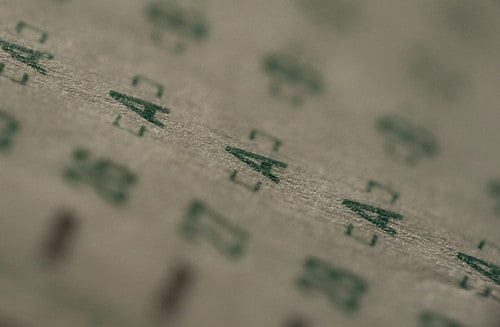Our last article talked about tones, and how important they are in Chinese language. Especially if you’re planning on being understood in China! Now, on to another important point: How to get your tones right when speaking Chinese.
First off, for those of us that come from non-tonal languages, trying to think about making a sound and modulating the tone of your voice to go up and down is a process that we are utterly unused to. It doesn’t come naturally. But, fret not. You can learn tones. And here’s how.
Mime your way to the right tone
When we were in School, we were first taught to act out the tones physically to pronounce them right. The idea is to move your head to accompany your voice and help it modulate the right way.

Is this Nincha cat acting out a first tone?
By moving your head from the left to the right in a diagonal downwards manner, you’re miming a fourth, falling, tone. Now trying saying ma (as in the English word “mama”) and moving your head (and voice) in that diagonal downwards manner. Hopefully, you’ve pronounced ma4, which means to yell. If at all possible, get a native speaker to tell you if you’re saying it right or not. Or record yourself to see if you sound right.
While this is fun when you’re young and in class, it’s not a very scientific method and it’s kinda impractical. (Imagine how people would react if you started acting out all your tones in the street in China?) Another method is to use hand gestures instead of head movements. (But again, you’ll look odd). But if it helps you pronounce correctly, go for it. In China, we’re all weird laowais (foreigners) anyways..
How on earth do you remember which tone to use?
Well, there’s no secret here. You’ve got to memorize them. As a non-native, it’s really important to focus and work hard on getting the tones right.
Make sure when you’re learning a new word, to lo memorize its tone(s) as well. Consider both aspects as part of the same unit. You wouldn’t ignore accents in Spanish, would you? Treat tones the same way. They’re there for a reason. So write down the pinyin with tones. Or, if you’re not using pinyin, add tone marks above the characters. One way is to use color codes (one color per tone). Find your prefered way to write them down. And memorize them.
True, some teachers will let tone mistakes slide because you’re learning to form sentences at the same time. Don’t let that fool you. It doesn’t mean you can just ignore tones and get away with it. You need to know the correct pronunciation from the start.
Doesn’t sound fun? Here’s something to cheer you up
Figuring out tones don’t always come naturally to the Chinese either. If you ask a Chinese person what tone a particular character should be pronounced with, they will almost always say the sound out loud a few times. They will actually listen to how they are saying it, and hear which tone it is. They will sometimes even get it wrong (figuring out which tone it is, not pronouncing it, mind you). That’s because Chinese people don’t really think in terms of pinyin and tones. And rely on pinyin less than we foreigners do!
Nonetheless, knowing the Chinese sometimes write down the wrong tone kinda makes me happy.

Anyhoo…Time to take the pressure down a notch.
When you’re a beginner, context is everything
The worst thing you could do in learning Chinese is not speak at all because you’re worried you’re going to say something wrong or worse, dumb. Or offensive. So go ahead and speak. Even if you don’t have your tones down pat yet. (No, we’re not saying tones don’t matter. Sorry!) But when you start speaking Chinese, you are bound to use the wrong tone at some point, despite your best efforts. That’s OK.
When you’re speaking in everyday life, – particularly at the beginner level – context is your friend. While the Chinese might be unused to hearing people pronounce Chinese wrong, they’ll still listen to the word in its context to try to understand what on earth you’re trying to say. Usually. (Unless of course they’ve decided you can’t speak Chinese and that there’s no point in listening to you. You’ll get a dismissive “ting bu dong” and that’s it. That also happens.) This helps tremendously to get by. Especially when you’re a newbie. Because, then, the predictability of what you’re going to say is high.
Make mistakes!
All in all, trial and error is what’ll help you really learn how to pronounce Chinese. You’ll ask for sugar and get soup for instance (both pronounced tang; but with different tones). Or you simply won’t get anything at all. That’s how you learn.
And then, there’ll be occasional surprises. Just to keep you on your toes! When living in China, sometimes you think you’ve mastered the right tone and pronunciation for something. Then you go to a new restaurant and order what you usually ask for. Suddenly no one understands you anymore. Vinegar is an example.
Trial and error. Adjusting. Correcting. That’s the key. And, if not in China to try your pronunciation out IRL, practice is even more essential. Practice your Chinese tones out loud. Find someone to practice them on. Listen to spoken Chinese and try to recognize which tones are being used. Do tone drills. And so on.
Do the work and you’ll get there. Like we said, don’t be afraid to make mistakes; chat away and get your tones wrong. It’s ok because mistakes (and getting corrected) are key in the learning process. Eventually you’ll be understood. Odds are you’re not going to end up insulting people unintentionally. And if you do, a nice smile and a heartfelt apology can do wonders 🙂
The Nincha Team
Stay in touch with us on Facebook, Twitter, Instagram, and Pinterest.






1 comment
Join the conversationPingback: The Best Free Chinese Dictionaries For Learners - Ninchanese
Comments are closed.